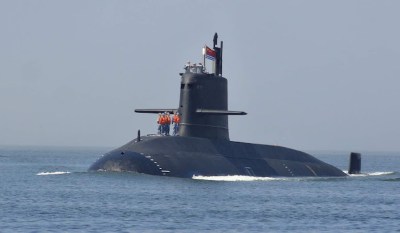US-India ties dangle darkly on Sikh separatist kill plot
The United States government recently stated it had thwarted a plot to assassinate a Sikh separatist leader in the US and issued a warning to the Indian government.
According to media reports, US authorities say they successfully stopped a plot to assassinate Sikh separatist Gurpatwant Singh Pannun on American soil. Pannun is a US-Canadian citizen and a prominent figure in the pro-Khalistan movement, which calls for establishing an independent Sikh state in northern India.
White House National Security Council spokesperson Adrienne Watson indicated that the administration is treating this issue with the utmost seriousness and noted it has been raised with India “at the senior-most levels.”
Canadian Prime Minister Justin Trudeau said he hoped India “will take these real concerns seriously.” This recent revelation comes two months after Trudeau said his government had “credible evidence” of an Indian link to the killing of a pro-Khalistan leader in Canada. In June 2023, Hardeep Singh Nijjar was assassinated outside a Sikh temple in Surrey, British Columbia.
The alleged killing in Canada and foiled plot in the US give rise to concerns regarding India’s reliability as a trusted strategic partner for Western governments.
The mounting authoritarianism of Indian Prime Minister Narendra Modi’s government and its belligerent foreign policy raises questions about India’s future trajectory which potentially conflicts with the interests of the US and its allies.
The US reportedly issued a diplomatic protest to India following Modi’s visit to Washington in June. Furthermore, US federal prosecutors have filed a sealed indictment against one suspect in court.
The debate now centers around whether to unseal and make this indictment public immediately, or await the completion of Canadian investigations before its disclosure.
Pannun has been organizing a symbolic referendum on an independent Khalistan in San Francisco. India perceives the activities of pro-Khalistan leaders as a threat to its sovereignty.

India’s differing responses
The Indian Ministry of External Affairs has not commented on the White House statement. Nevertheless, the White House statement conveyed that their Indian counterparts “expressed surprise and concern” upon the issue being raised with them. Indian officials reiterated that extrajudicial killing is not reflective of Indian government policy.
The contrast in the Indian government’s response to the Canadian and US announcements is intriguing. India vehemently denied Canada’s allegations and dismissed the claims as “absurd.”
Furthermore, New Delhi heightened diplomatic tensions by issuing a travel warning to its citizens in Canada, halting visa services and threatening to revoke the immunity of Canadian diplomats in India.
From the perspective of the Indian government, relations with Canada are not deemed strategically crucial. Consequently, India appears willing to weather a temporary strain in relations and can afford to allow them to be derailed for a few years.
However, India’s relations with the US hold immense strategic significance. Given the ongoing border disputes with China and Beijing’s escalating assertiveness, there exists a tangible threat to India’s territorial sovereignty.
Recognizing the power asymmetry with China, India finds it imperative to cultivate a closer strategic partnership with the US. Conversely, the US sees India as pivotal to its Indo-Pacific strategy, which is aimed at counterbalancing China’s growing influence.
The US has actively supported India’s economic and military growth to foster a power balance in the Asian region.

The great power rivalry between the US and China aligns with India’s national interests. However, India seeks a stable rivalry, cautious of overly hostile relations that could potentially entangle it in the US-China conflict. Simultaneously, if relations were to improve between the US and China, India could risk losing its current strategic significance.
The Indian government has consistently asserted that extrajudicial killing is not part of its foreign policy. However, its alleged involvement in Nijjar’s assassination in June, the killing of another Sikh leader in Pakistan in May, and this thwarted plot in the US indicate a concerning pattern of behavior.
The authoritarian tendencies of the Modi government and its seeming willingness to target people on foreign soil could strain India’s relationship with its allies and partners.
The India-US relationship has been billed as grounded in shared democratic values. This alliance has also been held up as a model contrasting with the authoritarian regime in China. The recent events, however, cast a shadow on this narrative and could prompt the US to reevaluate the partnership.
Under the authoritarian trajectory of the Modi government, US-India relations appear to be shifting towards an alignment with mutual interests rather than shared values.
Saira Bano is Assistant Professor in Political Science, Thompson Rivers University
Disclosure: Saira Bano does not work for, consult, own shares in or receive funding from any company or organization that would benefit from this article, and has disclosed no relevant affiliations beyond their academic appointment.
This article is republished from The Conversation under a Creative Commons license. Read the original article.






























